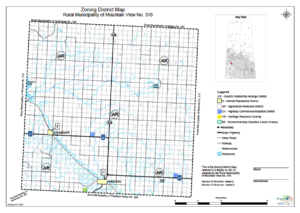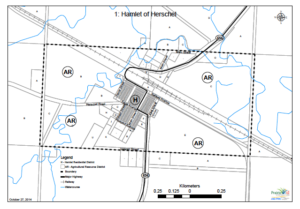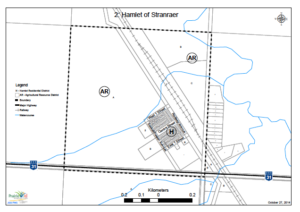FROM AGRICULTURE and AGRIFOOD CANADA
Insect Pest Surveys in Crops in 2017
Each year, entomologists from AAFC Research Centres collaborate with extension agrologists, crop specialists and industry groups to conduct insect pest surveys in field crops throughout the prairie region. I would like to take this opportunity to thank all of you for your tremendous support of the provincial insect monitoring programs in the past and we hope that you will be equally supportive in 2017.
Pest surveys furnish valuable information as to what insect pest species are present at different times of the year, and also provide an estimate of their density within different crops. Producers, provincial agricultural representatives and industry groups are provided with advance warning of potential pest problems through well-run insect pest monitoring programs. From a research perspective, survey results help to guide our research efforts on integrated insect pest management.
In 2017, our plans are to conduct organized surveys of a number of different insect pests. In most cases, the protocols require survey locations to be selected at random, making it very difficult to predict exactly where and when surveyors will be in a specific area. Most of the survey protocols require that the surveyor enters selected fields to visually inspect plants or to take sweep samples with a standard insect net. Other protocols may require that the surveyor enters selected fields to take random plant or soil samples. Our surveyors will be driving vehicles clearly marked with the Government of Canada logo and will be carrying photo-ID cards. We do not trespass on lands that are posted or have been restricted by owners and do not drive onto fields, only entering on foot. Surveyors wear disposable booties that are changed after each survey stop. If, during the surveys, you wish to obtain further clarification or wish to be provided with a report on the insect pests found at specific sites, our field staff would be more than pleased to discuss the results of their finding with you or please feel free to contact me at the address above.
Survey protocols along with weekly updates from the Prairie Pest Monitoring Network are posted on the PPMN blog http://prairiepestmonitoring.blogspot.ca/. Automatic emails of the weekly update can be received by subscribing to the blog. Survey protocols and weekly updates are also available on the WFPM website: http://www.westernforum.org/IPMNProtocols.html .
In order to give you a sense of the insect monitoring activities planned for 2017, we have provided brief examples of what to expect from some of the different surveys:
Cabbage seedpod weevil in canola. This pest was first discovered in southwest Saskatchewan in 2000. The objective is to determine the extent to which this pest has spread from the original infestation area in southern Alberta. Field staff will be surveying much of the province, during the flowering stage and will be taking sweep samples in canola fields.
Leafhoppers in canola. This pest carries the plant disease called Aster Yellows, a disease that has become more common in canola in recent years. The objective is to determine the extent and severity of leafhopper populations and their level of infectivity. Field staff will be surveying, primarily in the central and northern agricultural areas, prior to the flowering stage and will be taking sweep samples in canola fields.
Bertha armyworm and Diamondback moth in canola. Advance warning of these two pests are provided by the pheromone traps that have been set out by cooperators across the province to monitor the arrival of adults in canola. Once adult female moths have laid eggs in canola, the objective is to determine the extent and severity of larval populations in the crop. In this instance, field staff will be surveying during the flowering and pod development stage and will be visually counting larvae in the field.
Wheat midge in wheat. There are two life stages of the wheat midge that are monitored, the adult and the larval cocoon. The objective of the adult survey is to assess population density in the crop during the susceptible period, from head emergence to flowering. Field staff may be surveying in many regions of the province, during late June and early July, and will be entering fields late in the evenings to visually inspect wheat plants. The objective of the larval cocoon survey is to determine the extent and severity of midge populations in wheat. Field staff will be surveying in late fall throughout the province and will be entering fields after harvest to take small soil cores.
Grasshoppers in field crops and pastures. The objective of the adult grasshopper survey is to determine the extent and severity of grasshopper populations in field crops and pastures. Field staff will be surveying in early fall and will be entering ditches, fields and pastures to visually estimate grasshopper numbers over an 100m transect.
Pea Leaf Weevil. Recently, pea leaf weevil has begun to cause economic yield losses to field peas in Alberta, and it has been also been recorded in southwest Saskatchewan. This small weevil notches field pea leaves, decreasing production. Plans are to sweep pea fields in June and July to verify its status.
Swede midge & Cereal Leaf Beetle. Canadian Food Inspection Agency (CFIA) announced that adult Swede midge, confirmed in Saskatchewan in 2007, was recorded again in 2009. Swede midge is native to Europe and Asia, is a pest of plants in the Cruciferae family including vegetable crops (broccoli, cabbage, cauliflower) and oilseed crops (canola). Also a new record for Saskatchewan, CFIA announced that Cereal leaf beetle, a pest of cereal crops, was found in 2008.
FROM:
Owen Olfert, Research Scientist
Agriculture and Agri-Food Canada
Saskatoon Research Centre
107 Science Place Saskatoon, SK S7N 0X2
(306) 385-9355
[email protected]
insect populations in fields throughout the province 2017 monitoring _letter
Map overview 2017





